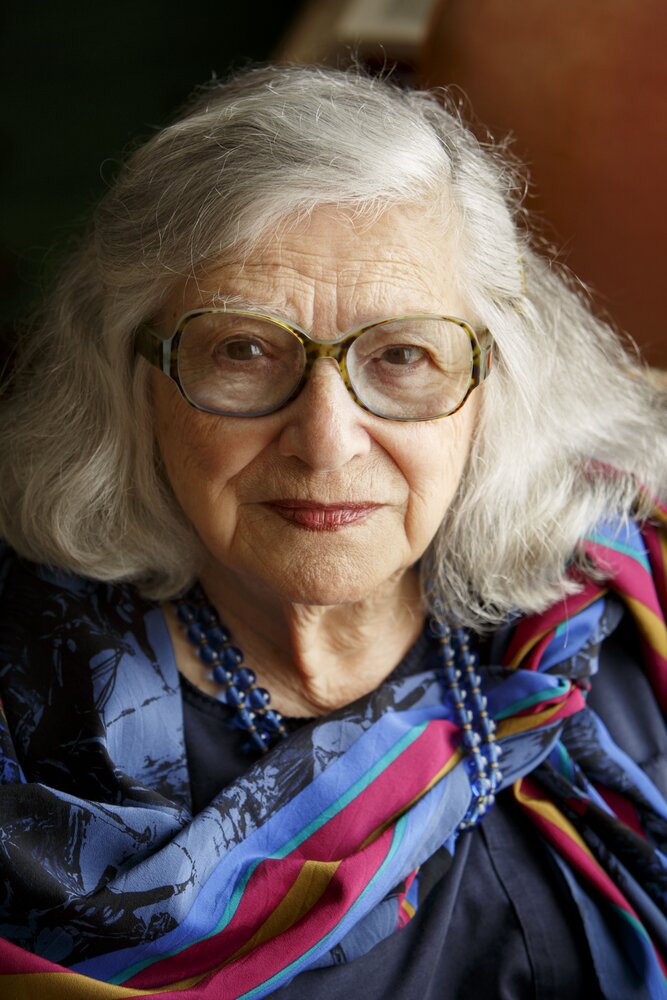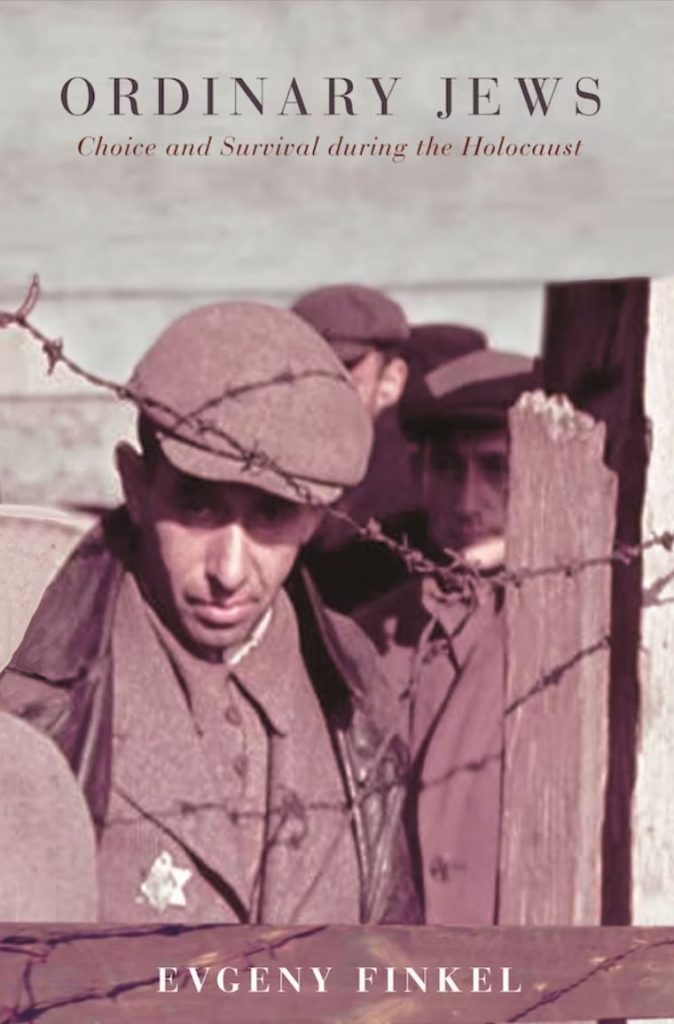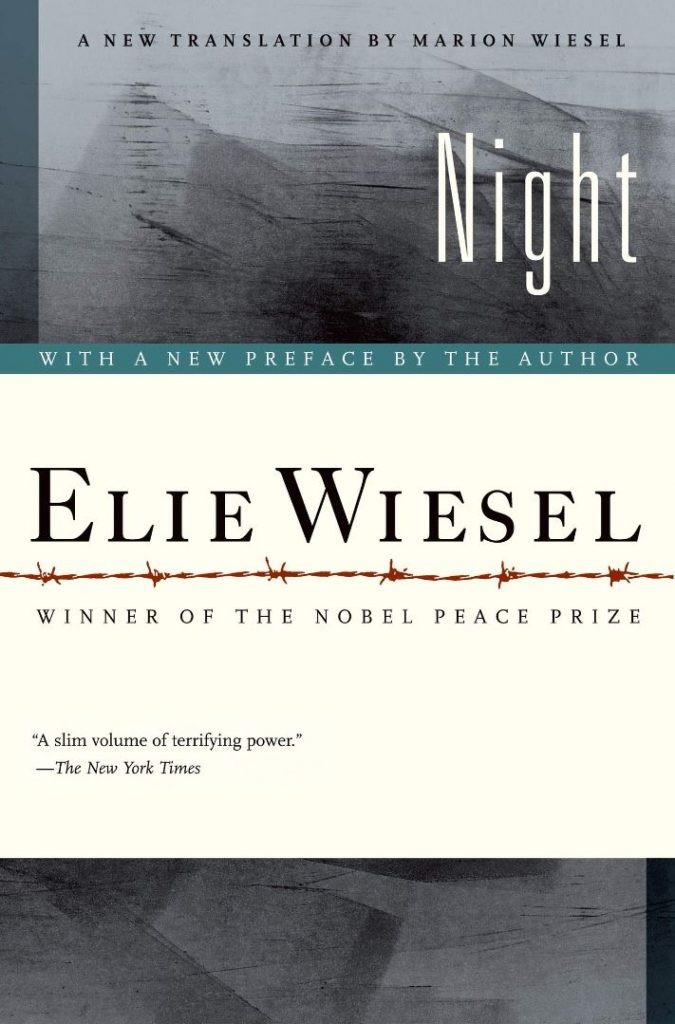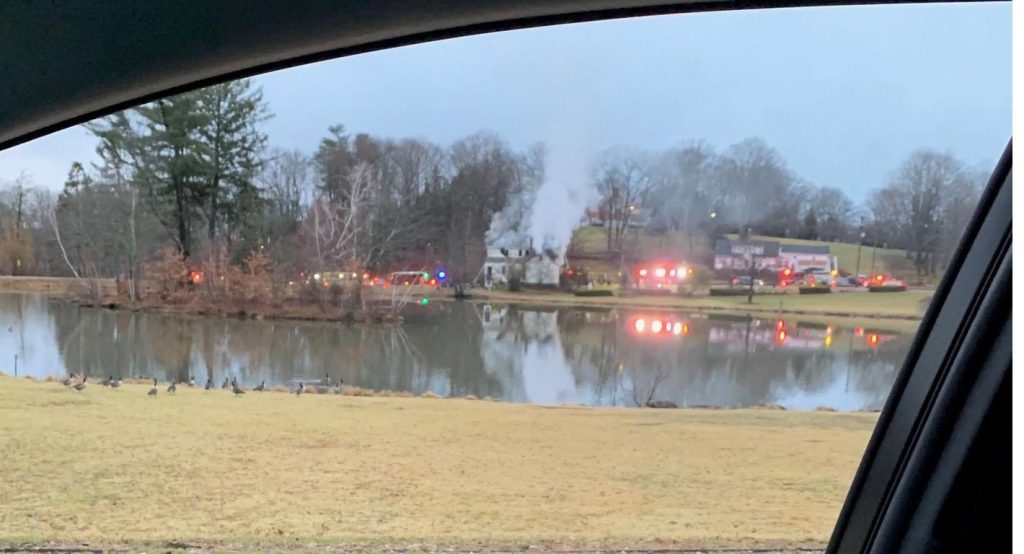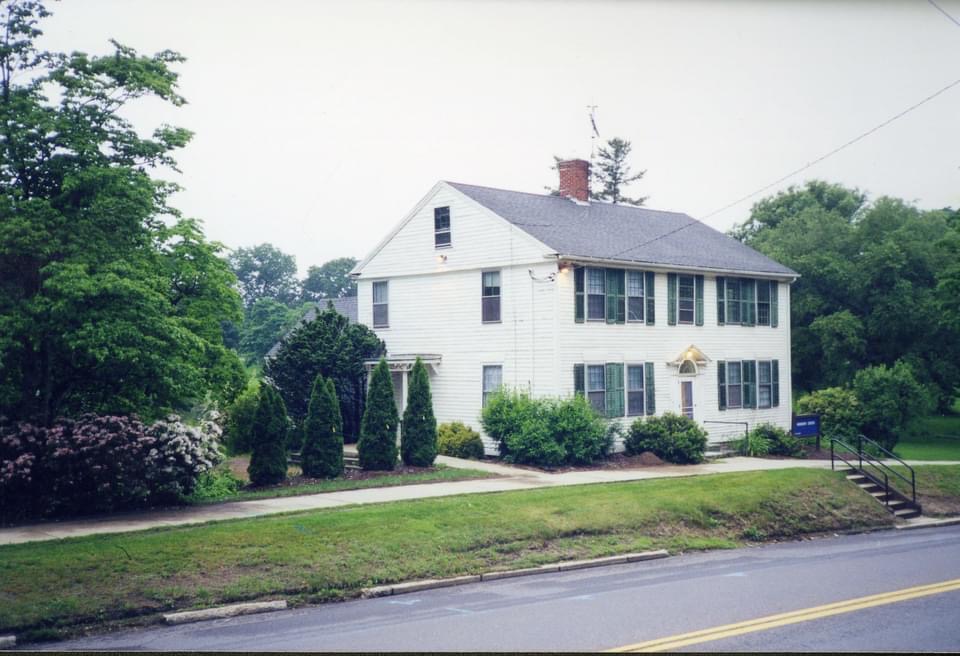In 2005, 60 years after the liberation of Auschwitz-Birkenau, the largest Nazi death camp, the United Nations designated January 27 as International Holocaust Remembrance Day. On this annual day of commemoration, the UN urges every member state to honor the six million Jewish victims of the Holocaust and millions of other victims of Nazism and to promote Holocaust education to help prevent future genocides and create a safer future. Following is a list of resources available to the UConn community to honor the day through education.
You can also check out the one credit course UConn is running starting March 6 – “Why the Jews? Confronting Antisemitism.”
Thanks to Zach Claybaugh, Betsy Pittman, and Graham Stinnett for gathering the following list. We welcome you to reach out if you would like to learn more.
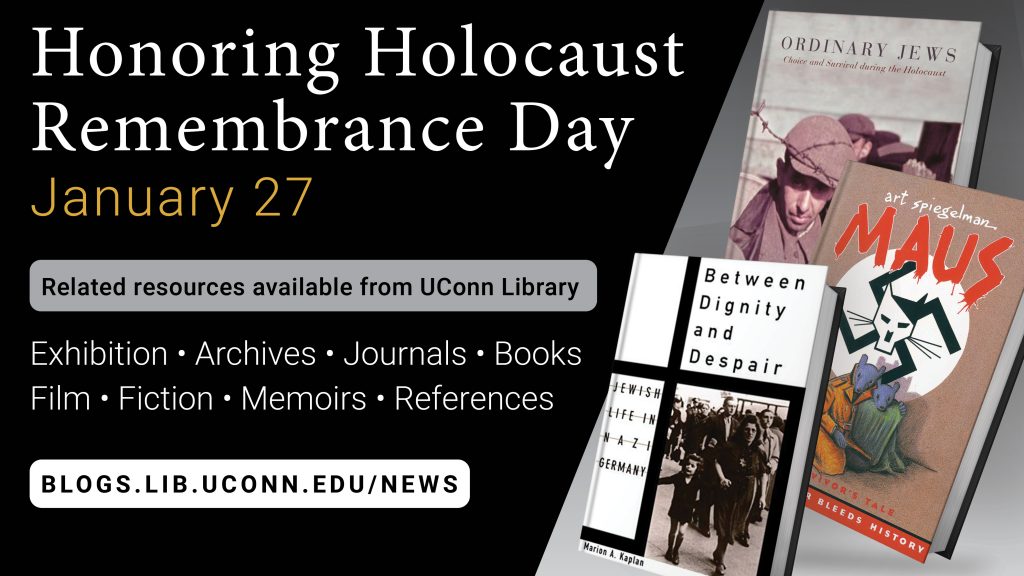
Exhibition
Kristallnacht: Art installation from the Collection of Irena Urdang deTour
Kristallnacht or the Night of Broken Glass was a pogrom against Jews carried out by the Nazi Party’s Sturmbtelilung (SA) and Schutstaffel (SS) paramilitary forces along with some participation from the Hitler Youth and German civilians throughout Nazi Germany on 9-10 November 1938. Jewish homes, hospitals and schools were ransacked as attackers demolished buildings with sledgehammers. Rioters destroyed 267 synagogues throughout Germany, Austria and the Sudetenland. Historically viewed as a prelude to the Final Solution, the month of November marks the anniversary of this dark period of history and genocide. This art installation has been created by Connecticut resident and Holocaust survivor, Irena Urdang deTour.
The exhibit has been extended through January 2023 in memory of Ms. DeTour who died in December 2022 at the age of 98. The exhibtion can be accessed through Archives & Special Collections.
Archival Collections
Connecticut Soldiers Collection, Carl Viggiani Papers. arl Viggiani, Emeritus Professor of Romance Languages and Literature at Wesleyan University, was a member of a “Spearhead Military Government Team” attached to the 83rd Infantry Division during World War II.As the 83rd moved down toward the Elbe in April 1945, Viggiani’s unit took over a Nazi official’s home in Braunschweig for a night.
Series VII: Nuremberg Trials from the Thomas J. Dodd Papers. The Thomas J. Dodd Papers consists primarily of material from Dodd’s Senate years (1959-1971) and the Nuremberg war crimes trial before the International Military Tribunal from 1945-1946.
Dedication of the Dodd Research Center by Elie Wiesel. Elie Wiesel was an Auschwitz survivor and human rights activist. Author of Night, Wiesel devoted his life to educating the world about the Holocaust. He was awarded the Nobel Peace Prize in 1986.
Other Resources
Database
Human Rights Online, Holocaust (1933-1945)
Documentary Film
Lanzmann, Claude. Shoah. New York: IFC Films, 1985.
Reference Work

Laqueur, Walter, and Judith Tydor Baumel-Schwartz, eds. The Holocaust Encyclopedia. New Haven, CT: Yale University Press, 2001.
Megargee, Geoffrey P., ed. The United States Holocaust Memorial Museum Encyclopedia of Camps and Ghettos, 1933-1945. Bloomington, IN: Indiana University Press, 2009.
Monographs
Browning, Christopher R. Ordinary Men: Reserve Police Battalion 101 and the Final Solution in Poland. New York: HarperPerennial, 1993.
Browning, Christopher R. The Origins of the Final Solution: The Evolution of Nazi Jewish Policy, September 1939-March 1942. Lincoln: University of Nebraska Press, 2004.
Finkel, Evgeny. Ordinary Jews: Choice and Survival During the Holocaust. Princeton, NJ: Princeton University Press, 2019.
Horwitz, Gordon J. Ghettostadt: Łódź and the Making of a Nazi City. Cambridge, MA: Belknap Press of Harvard University Press, 2008.
Kaplan, Marion A. Between Dignity and Despair: Jewish Life in Nazi Germany. New York: Oxford University Press, 1998.
Kay, Alex J. Empire of Destruction: A History of Nazi Mass Killing. New Haven, CT: Yale University Press, 2021.
Waxman, Zoë. Women in the Holocaust: A Feminist History. Oxford: Oxford University Press, 2017.
Academic Journals
Holocaust and Genocide Studies
Holocaust Studies: A Journal of Culture and History
The Journal of Holocaust Research
Fiction
Borowski, Tadeusz. This Way for the Gas, Ladies and Gentlemen. New York: Penguin, 1967.
Kertész, Imre. Fateless. Translated by Christopher C. Wilson and Katharina M. Wilson. Evanston, IL: Northwestern University Press, 1992.
Schwarz-Bart, André. The Last of the Just. Translated by Stephen D. Becker. New York: Atheneum Publishers, 1960.
Spiegelman, Art. Maus: A Survivor’s Tale. New York: Pantheon Books, 1986.
Memoir
Frank, Anne. The Diary of Anne Frank. Translated by Arnold Pomerans, B. M. Mooyaart-Doubleday, and Susan Massotty. The revised critical edition. New York: Doubleday, 2003.
Levi, Primo. Survival in Auschwitz: The Nazi Assault on Humanity. New York: Simon & Schuster, 1996.
Wiesel, Elie. Night. New York, NY: Hill and Wang, a division of Farrar, Straus and Giroux, 2006.

